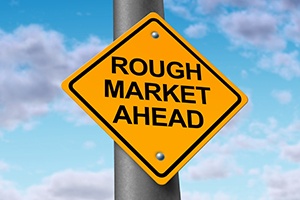 You know the old saying: hindsight is 20/20. Apparently, foresight is as well because I have recently seen several prominent economists and investors calling for a recession in 2020. Repent, the end is near—but not all that near.
You know the old saying: hindsight is 20/20. Apparently, foresight is as well because I have recently seen several prominent economists and investors calling for a recession in 2020. Repent, the end is near—but not all that near.
I don’t actually disagree with the conclusion, although I think there is a good chance a downturn might happen before that. Nor, per yesterday’s discussion on the great financial crisis, do I disagree with the need to anticipate and plan for a downturn. What I do find questionable is the need to hang a date on it.
The wrong call
I have been guilty of this myself, of course. I am on record as saying the downturn might well be in 2018, only to have tax reform and higher federal spending actually push growth up this year. I was going to be right, but events got in the way. In my defense, I was pointing out something that could happen, rather than making a prediction. Nonetheless, here we are. My data was excellent, my reasoning flawless, and then reality intervened. Even when the downturn comes—and it will—early is still wrong.
Taking a look at my call and what happened afterward, though, highlights the risks here. The call, at the time it was made, made sense and will, I suspect, ultimately be proven right. The same, no doubt, will be true of the 2020 calls that are being made right now. Still, a lot can happen, both good and bad, between now and then to make those calls fail.
Data versus predictions
So, what should we take from the recent headlines? That risks are high? Anyone who has been reading this blog realizes that. That conditions right now are so good that they are almost bound to roll over? Ditto.
While risks are high, they have been so for years. I remember getting into a fairly serious argument on TV with a hedge fund manager and with someone who later became a politician about whether the economy was going to collapse. I said no, and they said yes. This was in 2014, and they were right about the risk level. But high risks are not immediate risks. Got that one.
Given that, the other message we could draw is that with very respected analysts looking at trouble in 2020, we don’t have to worry until then. Obviously, I strongly disagree with this line of thinking. We need to keep an eye on the data, not the predictions.
Don’t get hung up on the date
Right now, the data is quite strong. It suggests that while the end may be near, the 2020 call that says it is not all that near may be correct. It takes time for conditions to roll over. Most of the indicators I track have lead times in the 12- to 18-month range. 2020 looks right on that estimation. Things can change, though. To get hung up on the date is to miss the data. When conditions do change, it will be the data—not the date—that signals that change.
I have made this case before, of course. The seven-year market cycle is a great example of imagined calendar dependency, as are the various metrics about market returns in various years of a presidency. These indicators may even be useful, on a calendar basis. But they are even more useful if you actually look at the underlying causes, rather than the calendar itself.
2020? Maybe. Personally, I will keep looking at the data, not the date.


 Print
Print

